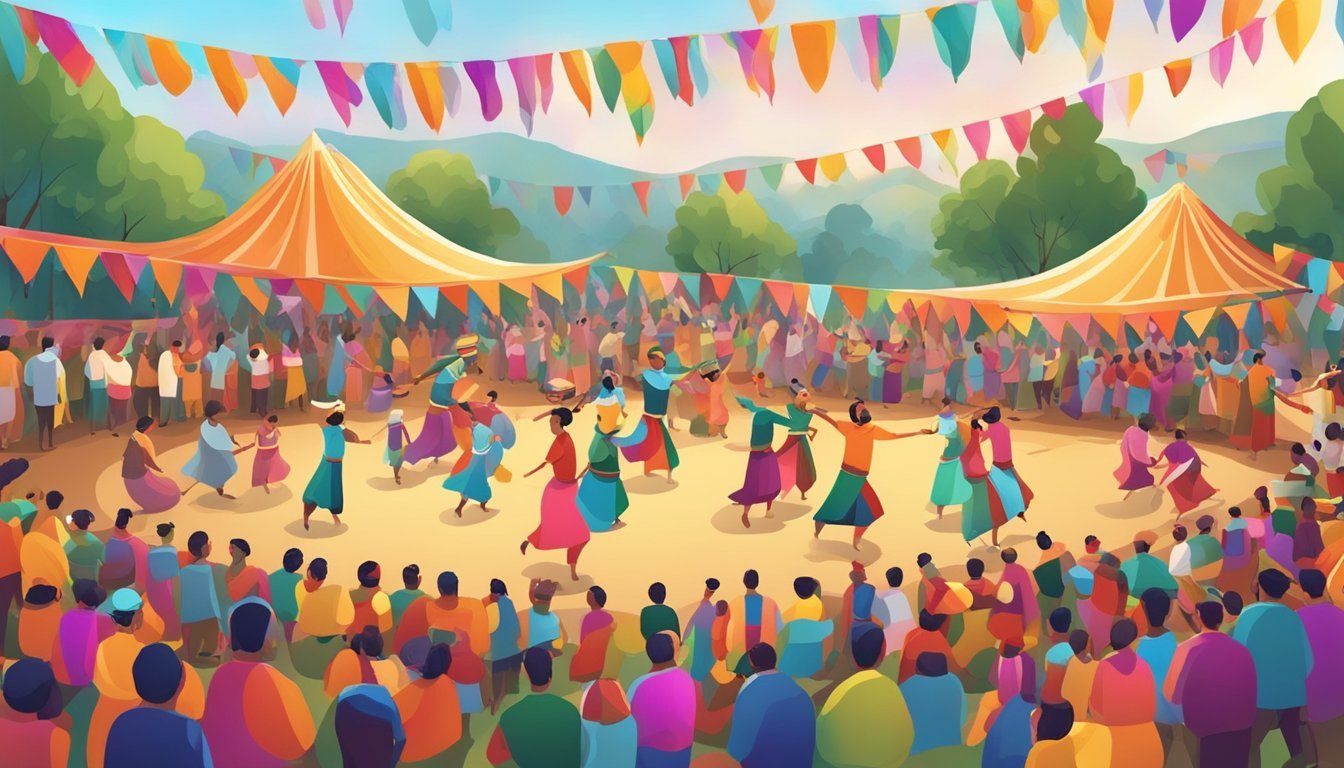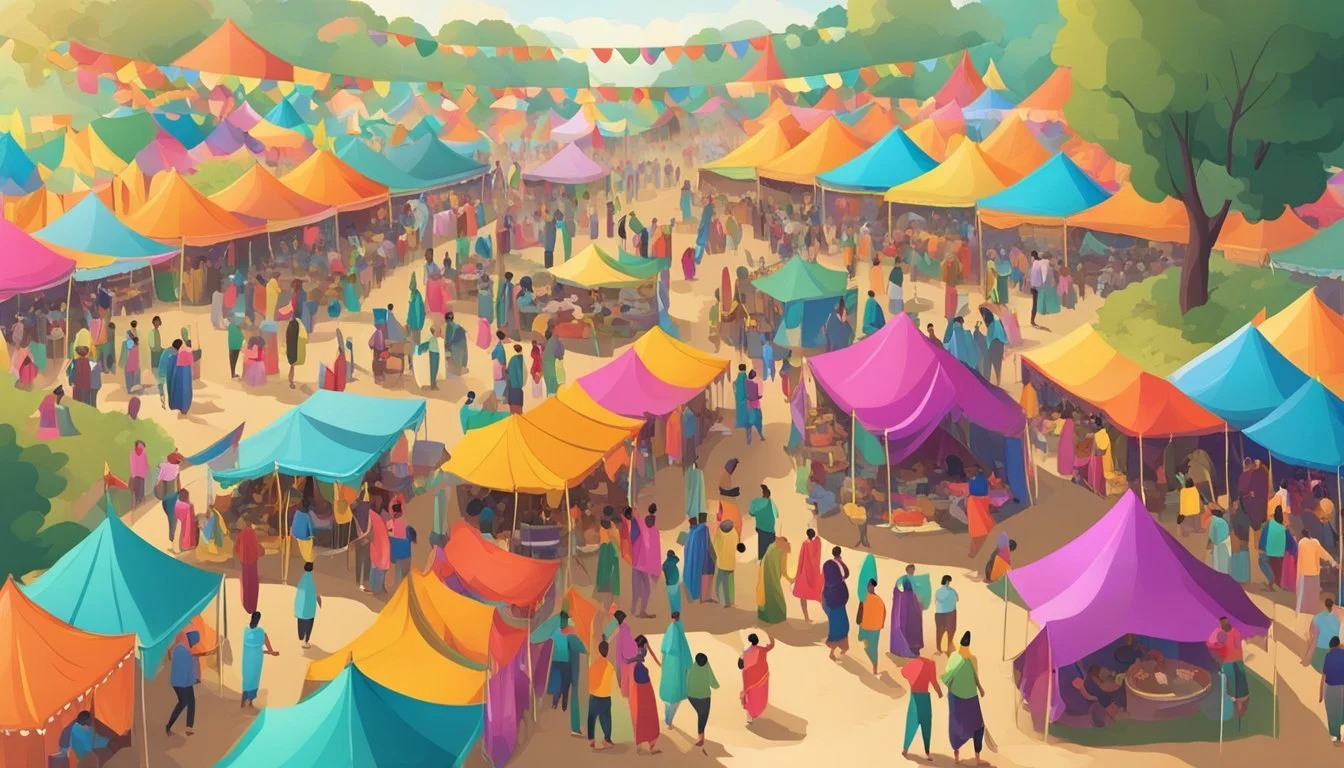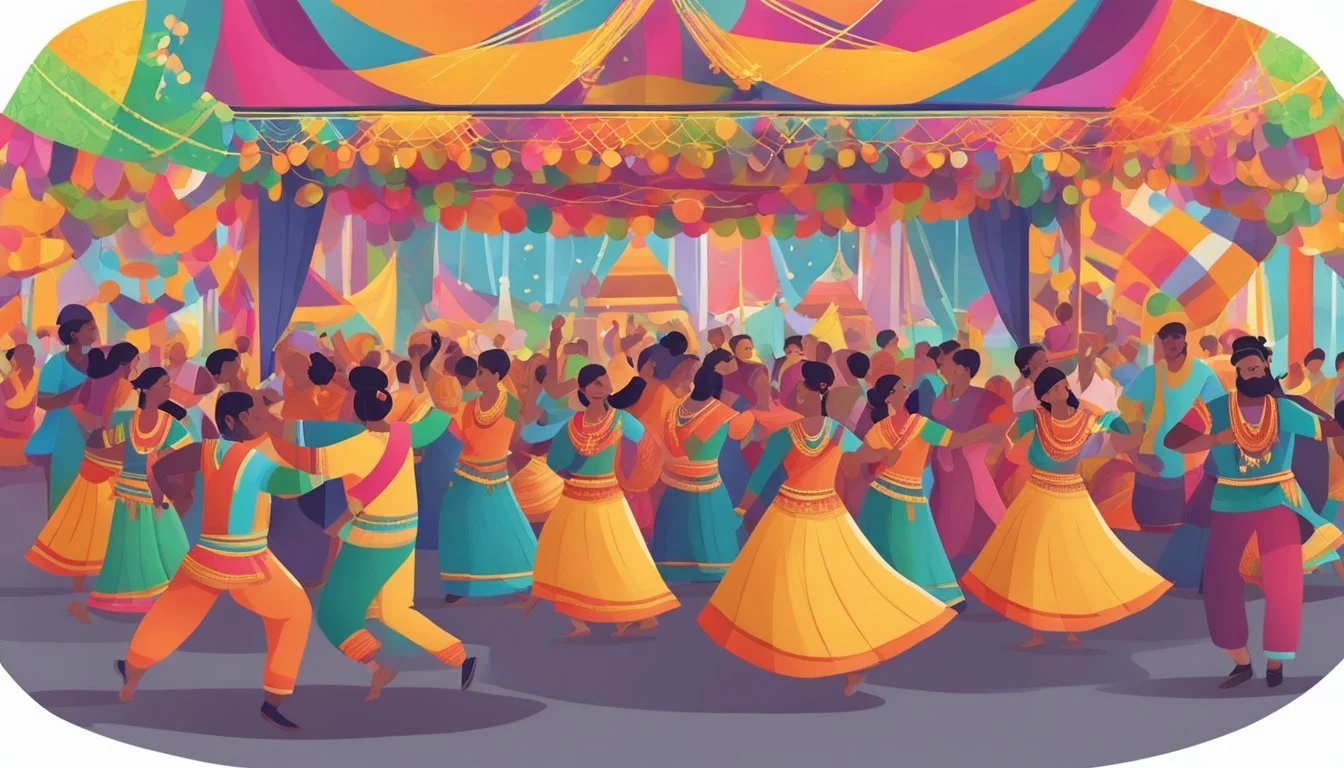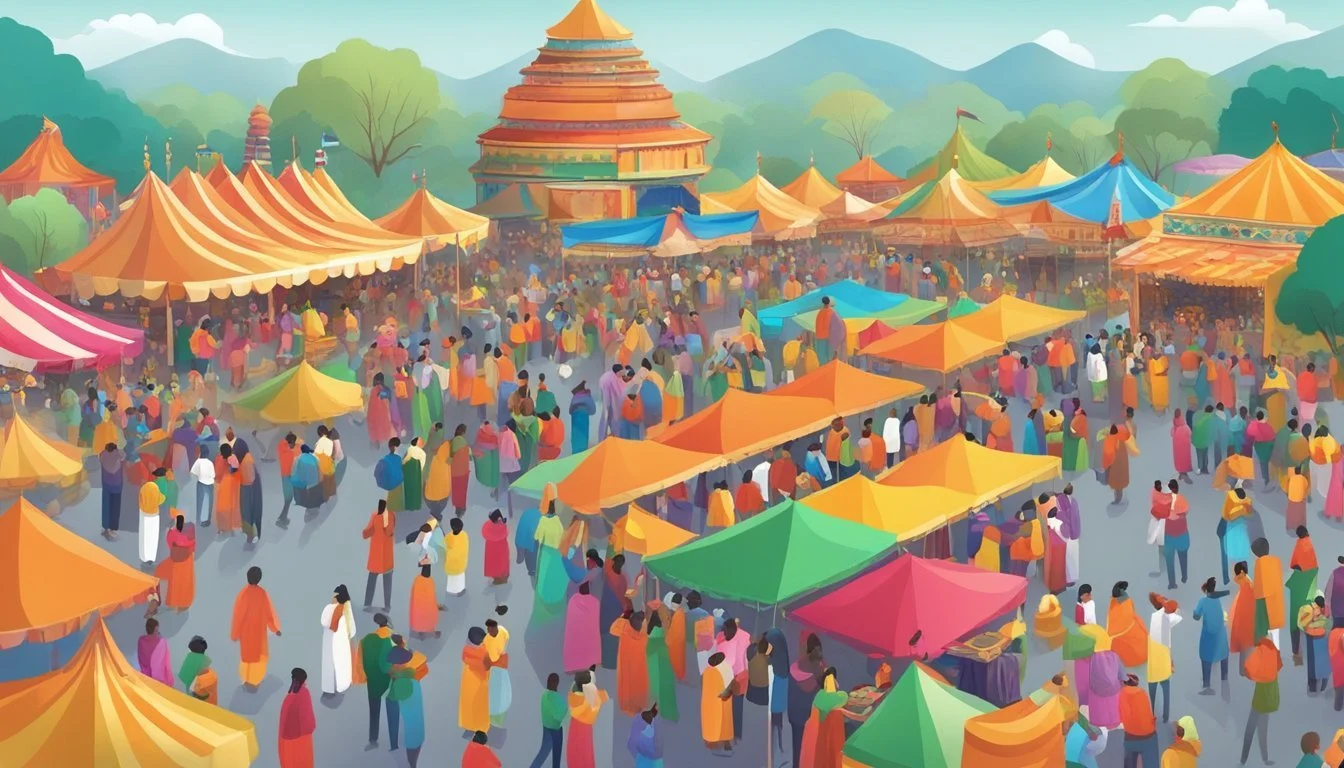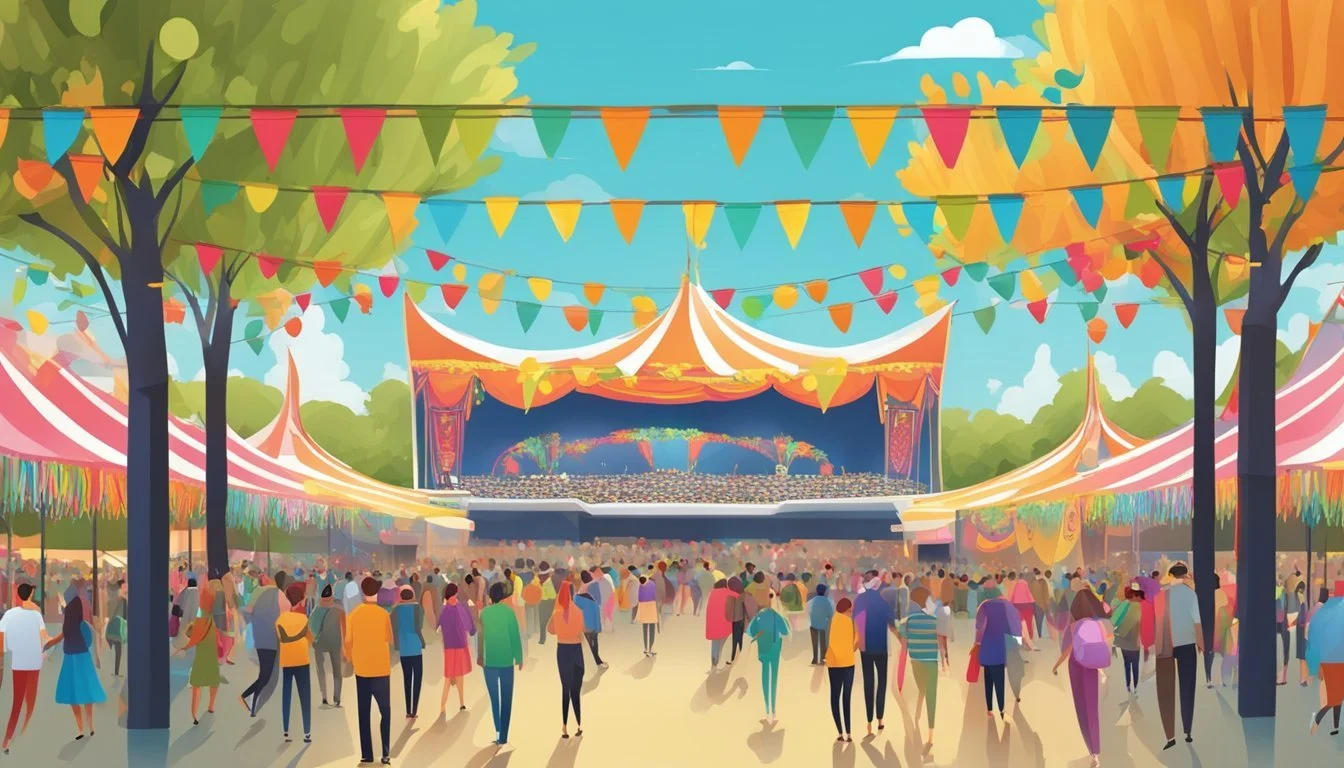Free Land for Cultural Festivals
Enhancing Community Bonds
Free Land for Cultural Festivals: Celebrating Heritage
Free land for cultural festivals can be a powerful catalyst for celebrating heritage. Local festivals often act as communal gatherings that celebrate diverse traditions, art, cuisine, and practices, creating a vibrant platform for people to connect through shared experiences. By providing free land, communities can foster cultural pride and ensure the preservation and transmission of their cultural heritage to future generations.
These cultural festivals enrich communal life by highlighting the unique aspects of various cultures, promoting an inclusive environment where everyone’s cultural identity is respected and celebrated. Such events deepen the understanding of diverse traditions, which can lead to a more harmonious society. The impact of these festivals is profound, as they invigorate the local culture while also bringing economic benefits through tourism and local business support.
The initiative of offering free land for festivals also serves as a significant step toward recognizing and valuing the social and cultural capital within communities. It allows for the continuity of important cultural practices and showcases the richness of cultural diversity, making it accessible to the wider public. Creating spaces dedicated to cultural celebrations can strengthen community bonds and highlight the importance of heritage and tradition in contemporary society.
Historical Context of Land Allocation for Cultural Festivals
The historical context of land allocation for cultural festivals highlights their evolution and the critical role land plays in heritage celebrations. It reflects how space for festivals has been shaped by cultural, social, and economic factors over time.
Evolution of Cultural Festivals
Cultural festivals have evolved from ancient times when they were ingrained in the community's fabric. In early agricultural societies, communal lands were often set aside for seasonal celebrations and rituals. These events were pivotal for maintaining the cultural tapestry and passing down traditions.
In medieval Europe, communal lands and town squares became the central locations for carnivals and fairs. These festivals would draw people from surrounding areas, fostering a sense of shared heritage and community bonds. As urbanization progressed, cities began designating specific areas for festivals to maintain social order and cultural continuity.
Significance of Land in Heritage Celebrations
Land holds profound significance in heritage celebrations. It is not just a venue but a cultural asset. Historical lands chosen for festivals often carry deep roots in local traditions. For indigenous communities, sacred spaces and ancestral lands are pivotal for conducting cultural rituals and celebrations.
Urban areas have also recognized the need for dedicated festival spaces. Modern cities rebrand and allocate open lands to host arts festivals, leveraging cultural heritage to enhance community spirit and drive economic growth. Allocating specific lands ensures that cultural heritage remains an integral part of the urban cultural tapestry.
This intentional allocation and preservation of festival lands underscore the importance of space in holding and expressing collective cultural identity.
Current Practices in Free Land Provision
Around the world, various practices are adopted to provide land for cultural festivals. These practices include specific examples from different regions and government initiatives aimed at promoting culture and boosting local economies.
Global Examples of Land Use for Festivals
In Europe, many cities allocate public spaces for annual cultural festivals. For instance, Vienna uses its public parks for music and arts festivals, enhancing community engagement and tourism. In Asia, cities like Tokyo and Seoul designate specific areas for traditional festivals, preserving cultural heritage and attracting visitors.
North America is home to numerous events in public spaces. New Orleans provides city parks for jazz festivals, supporting local artists and tourism. Similarly, Canada's Calgary Stampede utilizes public lands for cultural celebration, drawing international crowds. These examples highlight effective utilization of land for cultural enrichment and economic growth.
Government Policies and Cultural Promotion
Governments play a key role in promoting cultural festivals by providing free land and developing supportive policies. In the UK, local councils often offer public spaces for community events, helping preserve cultural heritage and foster social cohesion. The US has grants and subsidies for cultural initiatives, encouraging festivals that promote diversity and local traditions.
In India, policies focus on traditional festivals with economic incentives for communities. Municipalities provide land and infrastructure for events like Diwali and Holi festivals. In South America, Brazil's government supports Carnival through land allocation and logistical assistance, showcasing cultural vibrancy and stimulating local economies. These policies exemplify governmental efforts to sustain cultural heritage and economic development.
Cultural Significance and Community Impact
Cultural festivals not only celebrate traditions and cultural heritage but also play an integral role in fostering community bonds and promoting diversity and inclusion. These festivals are a testament to the values and identity of a community.
Strengthening Community Bonds
Local festivals serve as a powerful medium for strengthening community bonds. These events provide a space for individuals to come together, share experiences, and celebrate common cultural values. By participating in shared activities such as traditional dances, food fairs, and art exhibits, community members reinforce their sense of belonging.
Moreover, festivals offer an opportunity for intergenerational interactions. Elders pass down stories and customs to younger generations, ensuring the continuity of cultural heritage. This interaction is vital for maintaining identity and sustaining traditions within the community.
Diversity and Inclusion in Cultural Celebrations
Diversity and inclusion are fundamental to the essence of cultural festivals. These events showcase a variety of cultural expressions from different groups, emphasizing the significance of each culture. Festivals like Diwali or local agricultural fairs highlight not only specific traditions but also the shared human experience of celebration and joy.
By involving people from various backgrounds, festivals foster an environment of mutual respect and understanding. This inclusivity helps break down barriers and builds social cohesion within diverse communities. Celebrations that incorporate multiple cultural perspectives promote an inclusive community identity that honors everyone's heritage.
Role of Festivals in Cultural Education
Cultural festivals serve as significant educational tools by promoting heritage, arts, and traditions. These events foster an appreciation for diversity and provide interactive learning experiences.
Promotion of Arts and Crafts
Cultural festivals are a platform for showcasing arts and crafts, preserving traditional practices, and introducing them to new generations. Artisans and craftsmen often display their work, ranging from textiles and pottery to jewelry and visual arts, thus playing a key role in conserving cultural heritage.
Workshops and demonstrations are common, allowing participants to engage firsthand. For example, a pottery workshop at a cultural festival not only teaches the technique but also the history and significance behind the craft. This hands-on approach bridges the gap between theoretical knowledge and practical experience.
Galleries and exhibitions at these festivals highlight regional art, encouraging visitors to appreciate and understand the context behind various forms. Storytelling and live performances further enrich the experience, making arts and crafts more accessible and engaging.
Festivals as Educational Platforms
Cultural festivals act as vibrant educational platforms, providing insights into history, traditions, and customs from different cultures. They often involve interactive activities, such as dance performances, cooking classes, and traditional games, which educate participants through experience.
Museums frequently collaborate with festivals, setting up temporary exhibits that complement the event's theme. This partnership brings educational resources directly to the public, enhancing accessibility and learning outside traditional academic settings.
Lectures and panel discussions by historians and cultural experts offer deeper understanding, allowing attendees to gain varied perspectives. The immersive environment created by these festivals stimulates curiosity and fosters a deeper appreciation for cultural diversity and global citizenship.
Festivals and their Socioeconomic Contributions
Cultural festivals not only foster community bonds but also drive significant economic benefits. These events enhance local economies through tourism and provide vital support to local artists and artisans.
Cultural Tourism and Economic Development
Cultural festivals attract tourists who contribute to the local economy. Visitors spend on accommodation, food, and transportation, stimulating various sectors. These events can elevate a community's profile, transforming it into a cultural destination.
For example, heritage festivals often include traditional crafts and performances, boosting both cultural awareness and local businesses. Community engagement in these festivals fosters a sense of pride and identity, enhancing the social fabric.
Supporting Local Artists and Artisans
Local festivals provide platforms for artists, musicians, dancers, and craftsmen to showcase their talents. These opportunities boost careers and sustain the cultural heritage of the area.
Artists gain exposure and can sell their work, creating direct economic benefits. This also encourages the preservation of traditional arts and crafts, benefiting the local community both culturally and economically.
Technological Advancements and Cultural Festivals
As cultural festivals evolve, technology plays an integral role in enhancing various aspects of these events. Digital platforms enable cultural exchange and facilitate organization, while new technologies streamline outreach and engagement.
Digital Platforms for Cultural Exchange
Digital platforms have transformed cultural festivals by connecting people from all over the world. Virtual reality (VR) and augmented reality (AR) offer immersive experiences, allowing participants to engage with cultural artifacts and practices as if they were physically present.
Live streaming technologies enable festivals to reach a global audience. Social media platforms such as Facebook, Instagram, and Twitter serve as hubs for cultural dialogue, sharing experiences, and promoting cross-cultural understanding.
Interactive websites and mobile apps provide detailed information about festival schedules, performers, and historical contexts. These tools not only enhance participants' experiences but also broaden the reach of cultural festivals beyond their geographical boundaries.
Technology in Festival Organization and Outreach
Advanced technologies streamline the organization and outreach of cultural festivals. Event management software assists in planning and coordinating events, from scheduling performances to managing ticket sales and registrations.
Crowdsourcing tools and crowdfunding platforms like Kickstarter and GoFundMe support festival funding and community engagement. Analytics tools provide data on attendee demographics and preferences, helping organizers tailor festival experiences.
Geolocation services and mobile notifications improve visitor navigation and engagement within festival sites. Digital ticketing systems reduce wait times and logistical complications. Additionally, marketing automation platforms enhance outreach efforts by personalizing communication and targeting specific audience segments effectively.
Celebrating Major Cultural Festivals
Major cultural festivals around the world provide profound insights into the values and traditions of different societies, offering a window into their heritage and community spirit. The following sections will explore some of the most significant and colorful cultural festivals globally, highlighting their unique features and significance.
Diwali: The Indian Festival of Lights
Diwali, celebrated in India, is known as the Festival of Lights. This festival symbolizes the victory of light over darkness and good over evil. Homes are adorned with oil lamps and colorful rangoli designs. Fireworks illuminate the night sky, creating a mesmerizing display.
People exchange sweets and gifts, and prayers are offered to the Hindu deities, particularly Lakshmi, the goddess of wealth. Diwali brings families and communities together in a celebration of joy and prosperity.
Key traditions include lighting diyas (lamps), preparing festive foods, and performing religious rituals to mark the occasion.
Gion Matsuri: Japanese Traditions and Celebrations
Gion Matsuri is one of Japan's most famous festivals, held in Kyoto. It originated in the 9th century and features a month-long celebration with traditional Japanese performances, music, and parades. The highlight is the grand Yamaboko Junko parade, where elaborately decorated floats are carried through the streets.
Participants dress in traditional costumes, and tea ceremonies, traditional dances, and street food stalls are an integral part of the festivities. Locals and tourists alike come to witness this vibrant display of cultural heritage and community.
Gion Matsuri reflects Japan's deep respect for tradition and showcases the rich tapestry of its historical customs.
The Vibrance of Brazilian Carnival
Brazilian Carnival is renowned for its exuberant parades, samba music, and colorful costumes. Held before Lent, it is a vibrant celebration that attracts millions of participants and spectators from around the world.
Rio de Janeiro's Sambadrome hosts the most famous parade, with samba schools competing in elaborate performances. Dancers don intricate costumes adorned with feathers, sequins, and beads, moving rhythmically to the infectious beats of samba music.
The street parties and blocos (street bands) add to the carnival atmosphere, creating a sense of unity and joyous celebration. Brazilian Carnival embodies the spirit of freedom, creativity, and cultural pride, making it an unforgettable experience for all who attend.
Cultural Festivals as Reflections of Societal Values
Cultural festivals provide a unique window into the values and traditions that shape societies. They celebrate both historical roots and contemporary reinterpretations, reflecting the dynamic nature of cultural heritage.
Appreciation of Ancestral Roots
Cultural festivals often honor ancestral roots, emphasizing the importance of cultural heritage. These events showcase traditional music, dance, and cuisine, allowing participants to reconnect with their heritage. For instance, festivals like Diwali in India or Dia de los Muertos in Mexico celebrate historical customs and beliefs.
Participants gain a deeper appreciation for their cultural identity. They engage in rituals that have been passed down through generations. These festivals not only preserve traditions but also foster a sense of belonging and continuity within the community.
Modern Festivals and the Reinterpretation of Traditions
Modern festivals reinterpret traditional customs, blending them with contemporary elements. Events such as music festivals or art fairs often incorporate traditional motifs and practices in new and innovative ways. This blend highlights the evolving nature of cultural identity in modern society.
These festivals attract diverse audiences, bridging generational gaps and fostering inclusivity. They serve as platforms for dialogue and exchange, where traditional values are celebrated alongside modern interpretations. This dynamic interplay between old and new enriches cultural heritage, making it relevant for future generations.
Challenges and Conservation Efforts
Providing free land for cultural festivals and conserving these spaces presents numerous challenges and requires dedicated efforts to ensure cultural heritage is preserved and appreciated.
Challenges in Providing Free Land
Securing free land for cultural festivals faces significant hurdles. Urbanization and real estate development often limit the availability of open spaces. Municipal budgets are stretched, making it difficult to allocate land solely for cultural purposes. Additionally, the bureaucratic process for land allocation can be lengthy and complex.
Environmental concerns also play a role. Festivals need to be mindful of their impact on local ecosystems, which can restrict the use of certain areas. Community opposition can arise when residents prefer land be used for other purposes, such as housing or commercial development. This can slow down projects or create legal battles that further complicate land procurement.
Conservation of Cultural Spaces
Conserving cultural spaces involves both protecting physical sites and nurturing the intangible heritage they represent. Heritage conservation often requires substantial funding, which can be hard to secure. International bodies like UNESCO provide some support, but local governments must often shoulder most of the financial burden.
Maintenance of historical landmarks and venues is essential to ensure they remain safe and accessible. Regular upkeep is needed to prevent deterioration due to weather, pollution, or vandalism. Beyond physical preservation, fostering local appreciation and involvement is crucial. When communities value their cultural spaces, they are more likely to participate in and support conservation efforts.
Educational programs and public festivals can help raise awareness, ensuring that cultural heritage is not only preserved but also celebrated. This holistic approach combines safeguarding tangible assets with promoting intangible cultural expressions.



